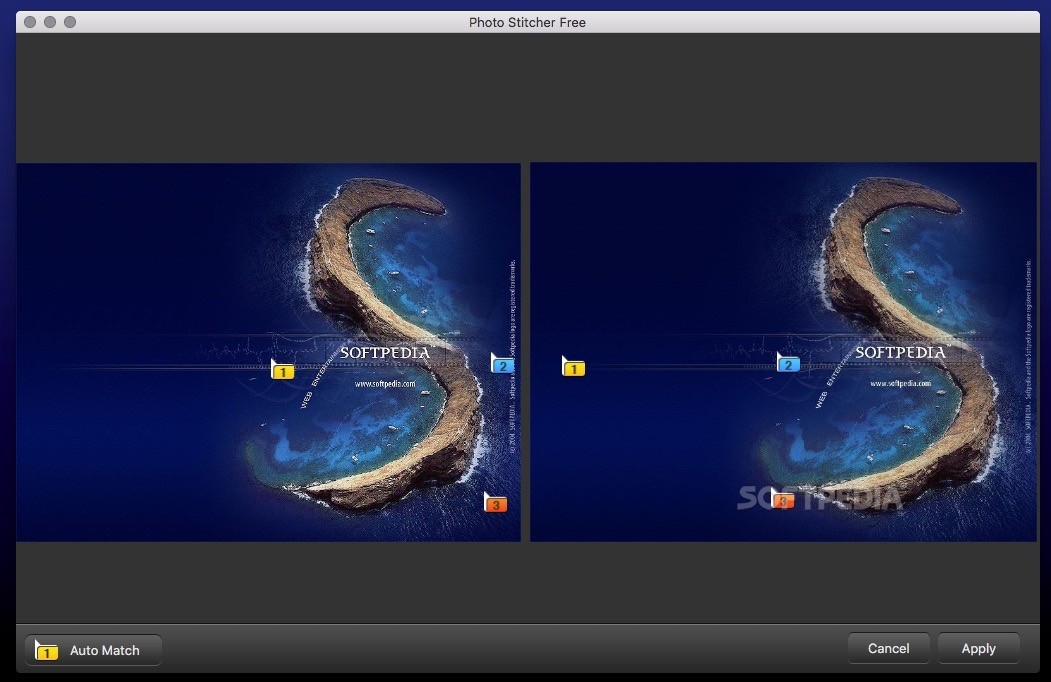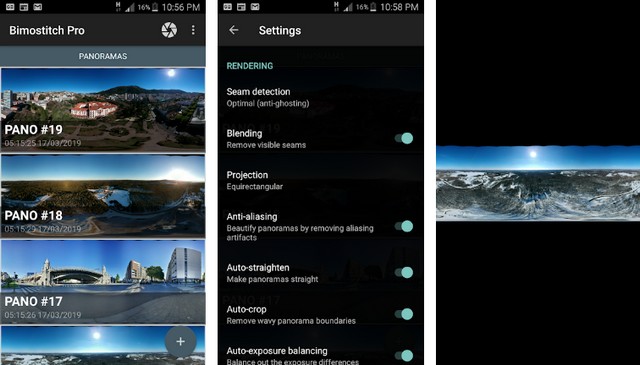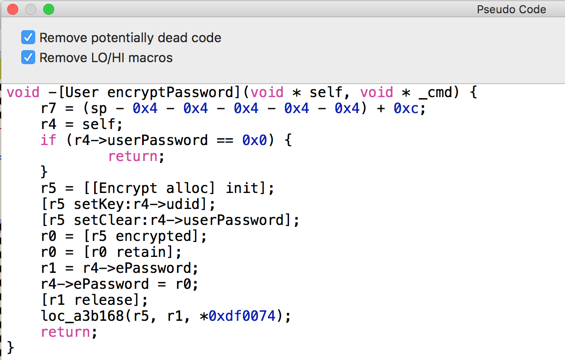

- #Panorama stitcher iphone install
- #Panorama stitcher iphone full
- #Panorama stitcher iphone software
- #Panorama stitcher iphone code
- #Panorama stitcher iphone download
#Panorama stitcher iphone code
If images are not supplied in this order, then our code will still run - but our output panorama will only contain one image, not both. The ordering to the images list is important: we expect images to be supplied in left-to-right order. Line 15 unpacks the images list (which again, we presume to contain only two images). We can also optionally supply ratio, used for David Lowe’s ratio test when matching features (more on this ratio test later in the tutorial), reprojThresh which is the maximum pixel “wiggle room” allowed by the RANSAC algorithm, and finally showMatches, a boolean used to indicate if the keypoint matches should be visualized or not. The stitch method requires only a single parameter, images, which is the list of (two) images that we are going to stitch together to form the panorama.

# if the match is None, then there aren't enough matched (kpsB, featuresB) = tectAndDescribe(imageB)įeaturesA, featuresB, ratio, reprojThresh) (kpsA, featuresA) = tectAndDescribe(imageA) # unpack the images, then detect keypoints and extract Next up, let’s start working on the stitch method: def stitch(self, images, ratio=0.75, reprojThresh=4.0, Since there are major differences in how OpenCV 2.4 and OpenCV 3 handle keypoint detection and local invariant descriptors, it’s important that we determine the version of OpenCV that we are using. The constructor to Stitcher simply checks which version of OpenCV we are using by making a call to the is_cv3 method.

We’ll be using NumPy for matrix/array operations, imutils for a set of OpenCV convenience methods, and finally cv2 for our OpenCV bindings.įrom there, we define the Stitcher class on Line 6. We start off on Lines 2-4 by importing our necessary packages. Self.isv3 = imutils.is_cv3(or_better=True) Let’s go ahead and get started by reviewing panorama.py : # import the necessary packages
#Panorama stitcher iphone install
The Stitcher class will rely on the imutils Python package, so if you don’t already have it installed on your system, you’ll want to go ahead and do that now: $ pip install imutils We’ll encapsulate all four of these steps inside panorama.py, where we’ll define a Stitcher class used to construct our panoramas. Step #4: Apply a warping transformation using the homography matrix obtained from Step #3.Step #3: Use the RANSAC algorithm to estimate a homography matrix using our matched feature vectors.Step #2: Match the descriptors between the two images.Step #1: Detect keypoints (DoG, Harris, etc.) and extract local invariant descriptors (SIFT, SURF, etc.) from the two input images.Our panorama stitching algorithm consists of four steps: If it is the first time you use Online App Box, please click here to read more informationĬopyright © Online App Box (), All rights reserved.Looking for the source code to this post? Jump Right To The Downloads Section OpenCV panorama stitching Double-click Hugin (panorama stitcher) in online app box When you have successfully registered, you can begin to use the online app box on any platformĤ.
#Panorama stitcher iphone software
Then, the software will remind you need to register an accountģ.

#Panorama stitcher iphone download
The software will add a virtual disk on your hard drive, allowing you to upload or download data, specify: This method is completely safeĢ. When you first run the software, it will pop up a message (shared folder message), just click OK button. Hugin can produce successful panoramas shot with cameras that always shoot using auto-exposure and auto-whitebalance.ġ. Bracketed photos can be handheld, taken using a DSLR bracketing function, or as consecutive panoramas shot at different EV exposure levels. Hugin supports panoramas taken with multiple rows of photos, with or without bracketing. Hugin supports various output projections including a range of spherical, cartographic, and camera projections.
#Panorama stitcher iphone full
A full range of lenses are supported, from simple cameraphones to obscure fisheye lenses. Photos can be digital or scanned, and taken with any kind of camera. Although Hugin is essentially a panorama stitcher, like other GUI front-ends it has a range of advanced features:Īmong the Hugin workflow options, it is possible to correct exposure, Vignetting and White balance between photos generate HDR, exposure fused or focus stacked output from bracketed photos or use 16bit and HDR input data natively.


 0 kommentar(er)
0 kommentar(er)
